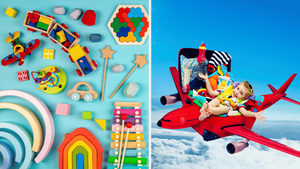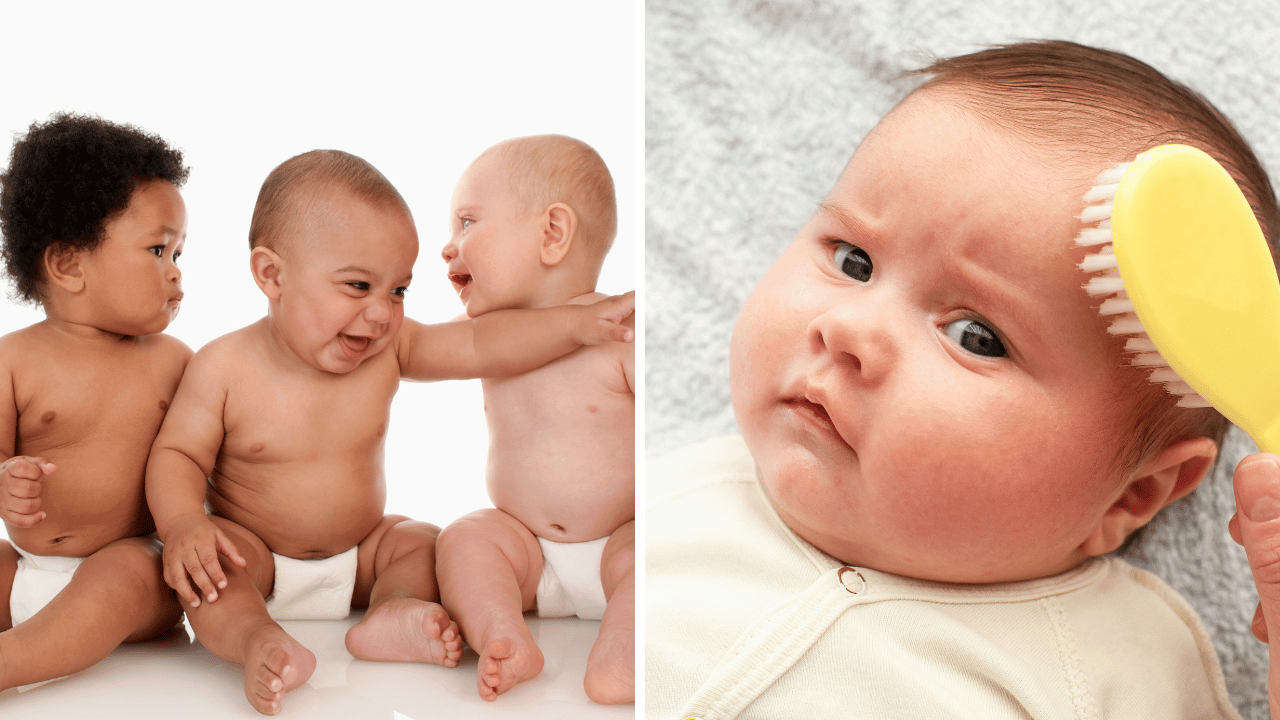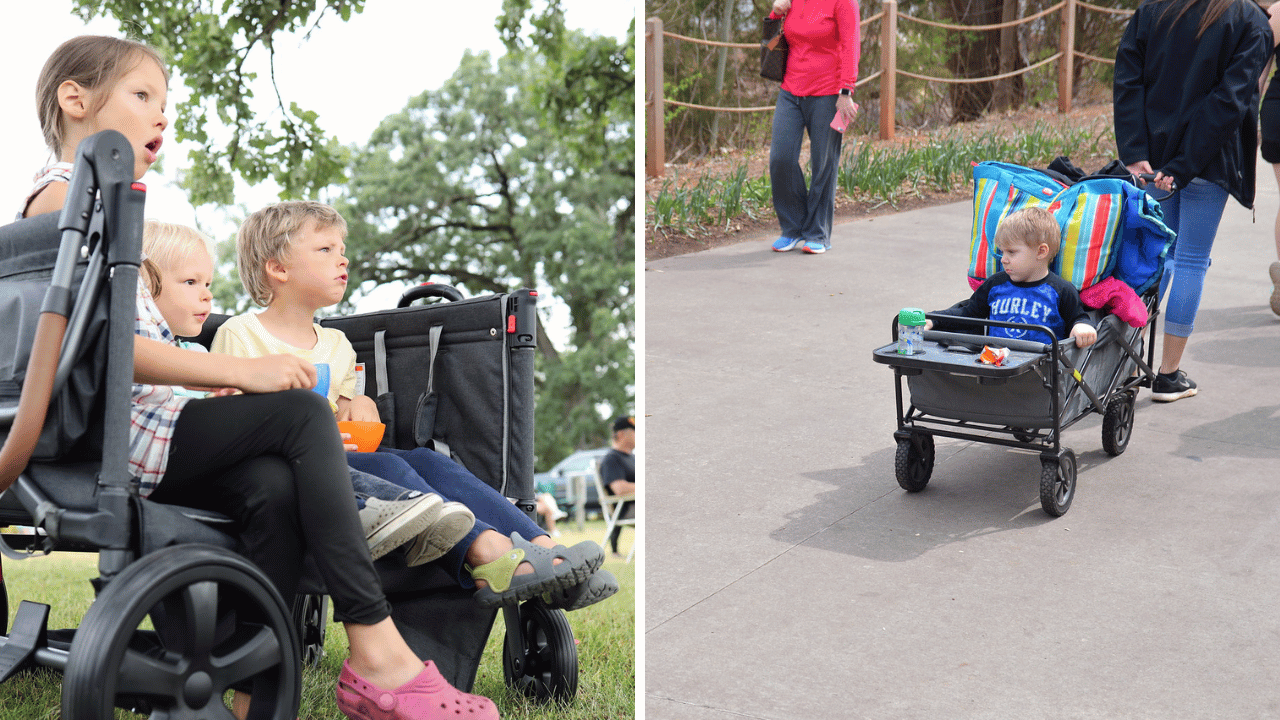What do newborn babies find interesting? Believe it or not, oftentimes the most captivating objects in a baby's world are black and white; life seen in shades of grey.
Newborns aren't able to see color yet, so they focus their attention on items with the highest contrast: black and white prints.
As they start to develop their vision, these contrasting images become even more meaningful for them because they can now see all the details that comprise each unique design—a fascination which parents love to take advantage of.
Read on if you'd like to learn about why babies are drawn to black-and-white patterns and how you can use them creatively throughout your child's early development journey.
Overview of Newborns' Color Perception
The FIRST thing you need to understand about your baby's color perception is that they aren't able to accurately process colors until around the age of 4 months. At this point, they can begin to distinguish between certain hues and shades, but in general their eyes are not developed enough to perceive a full range of tones.
That's why it's important for parents to introduce black-and-white images and patterns as early as possible in a baby's life. Also, it's important to remember that newborns have a higher sensitivity to contrast than adults. So, when presented with black-and-white images they are immediately drawn to the stark differences between shades and patterns.
Why Babies See the World in Black and White
While newborns may be unable to recognize colors, that doesn't mean they are not able to recognize shapes. In fact, a baby's eyes are actually very good at picking up subtle differences in black-and-white images and patterns. This allows them to differentiate between various objects almost immediately.
Also, since babies have a high contrast sensitivity, black-and-white images are often the best way to engage their visual senses. They are also incredibly stimulating and can keep a baby's attention for long periods of time—something that parents love!
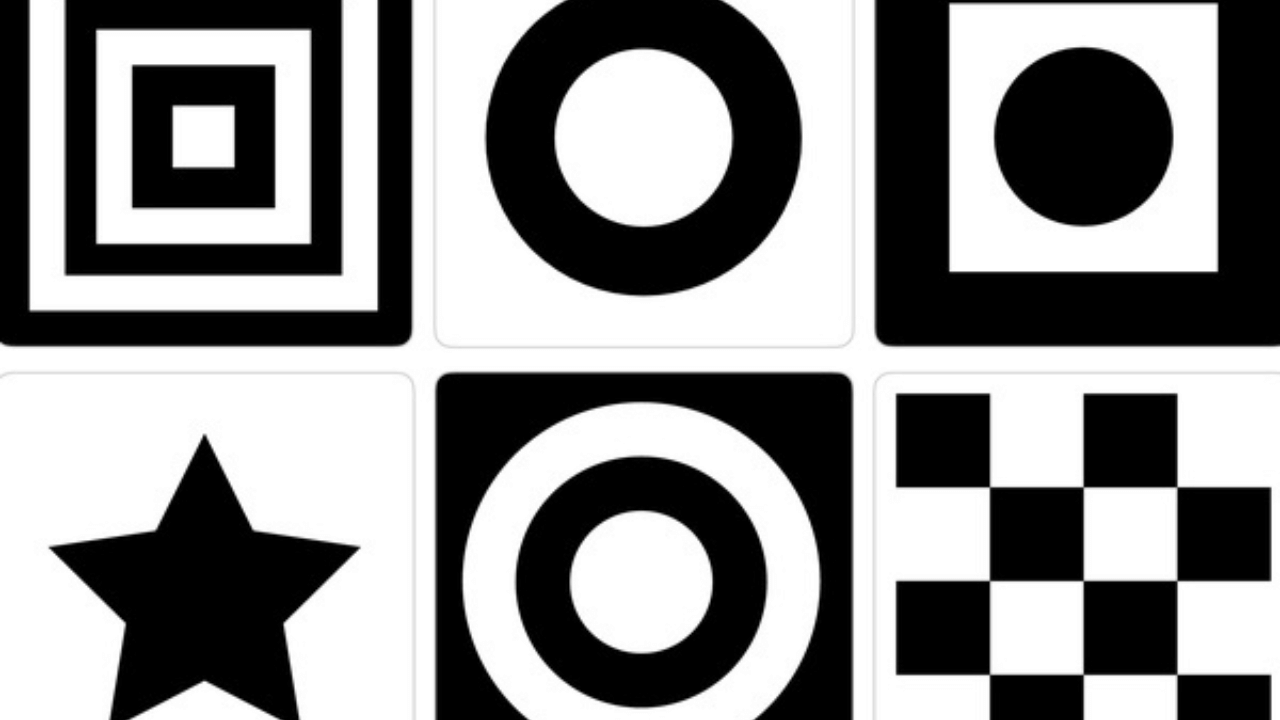
How to Stimulate Your Baby's Learning Through Color Perception
Once you understand why babies find black-and-white images so captivating, you can use this knowledge to your advantage. You can introduce various designs and patterns in a baby's nursery or play area, providing an optimal learning environment for them during their early developmental stages. Here are some ideas:
- Hang mobiles containing black and white shapes above a baby's crib or play area.
- Show your baby black-and-white photographs of family, friends and animals.
- Place contrast cards on the walls around your home to provide a stimulating environment for the infant to explore.
- Purchase toys with black and white designs such as rattles, teethers and books.
By introducing black-and-white objects to your baby, you'll be giving them an opportunity to learn more about the world around them—an experience that will benefit them for years to come.
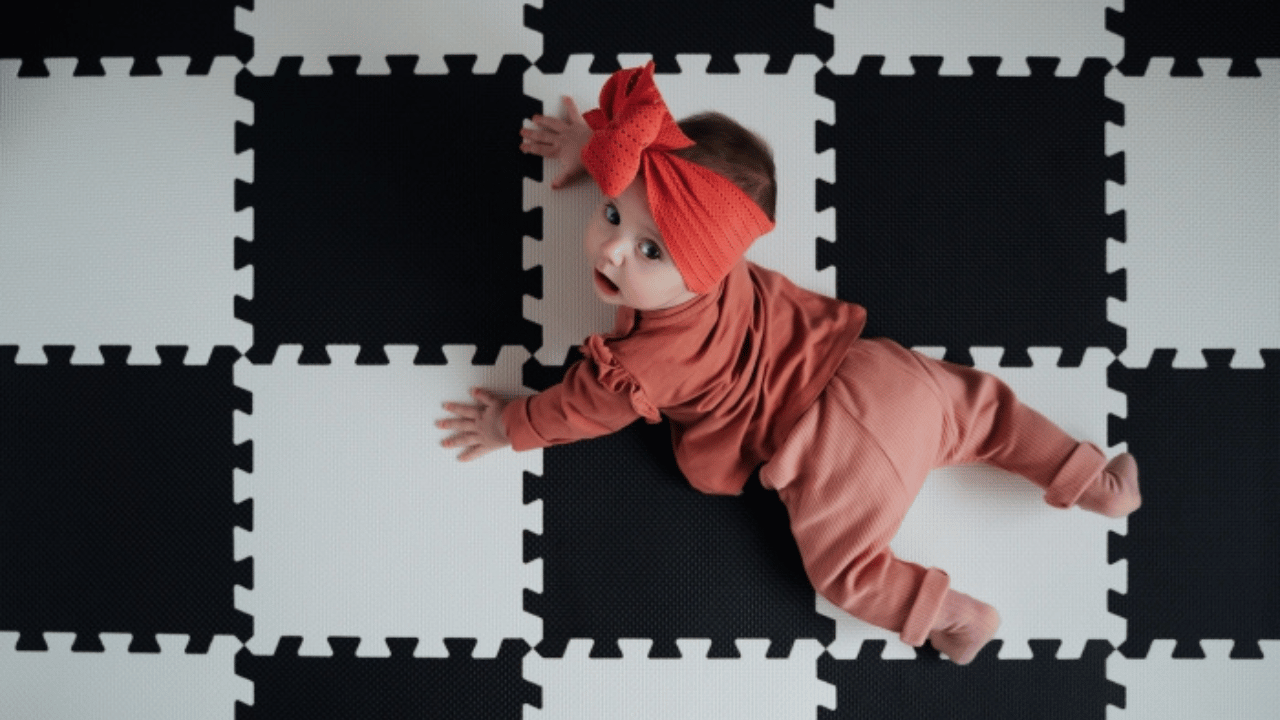
Different Stimulation Techniques for Infants and Toddlers
As your baby's color perception improves, you can also start to introduce more colorful objects in their environment. You should use the same techniques as before, but add a few extra elements to further stimulate your child’s development.
For infants and toddlers who are able to see colors, it's important to provide images and toys with bright, vibrant hues. This will help them to differentiate between objects and colors, improving their visual skills further. You can also introduce educational toys such as blocks and building sets that come in a variety of shades to keep your child engaged.
It's also beneficial to provide tactile stimulation for your baby during this stage. Soft blankets, stuffed animals, and different textures are all great ways to give them the tactile input they need. And, you may want to try introducing some art and music into your baby’s life—not only are these activities fun and engaging, but they can also stimulate their cognitive development.
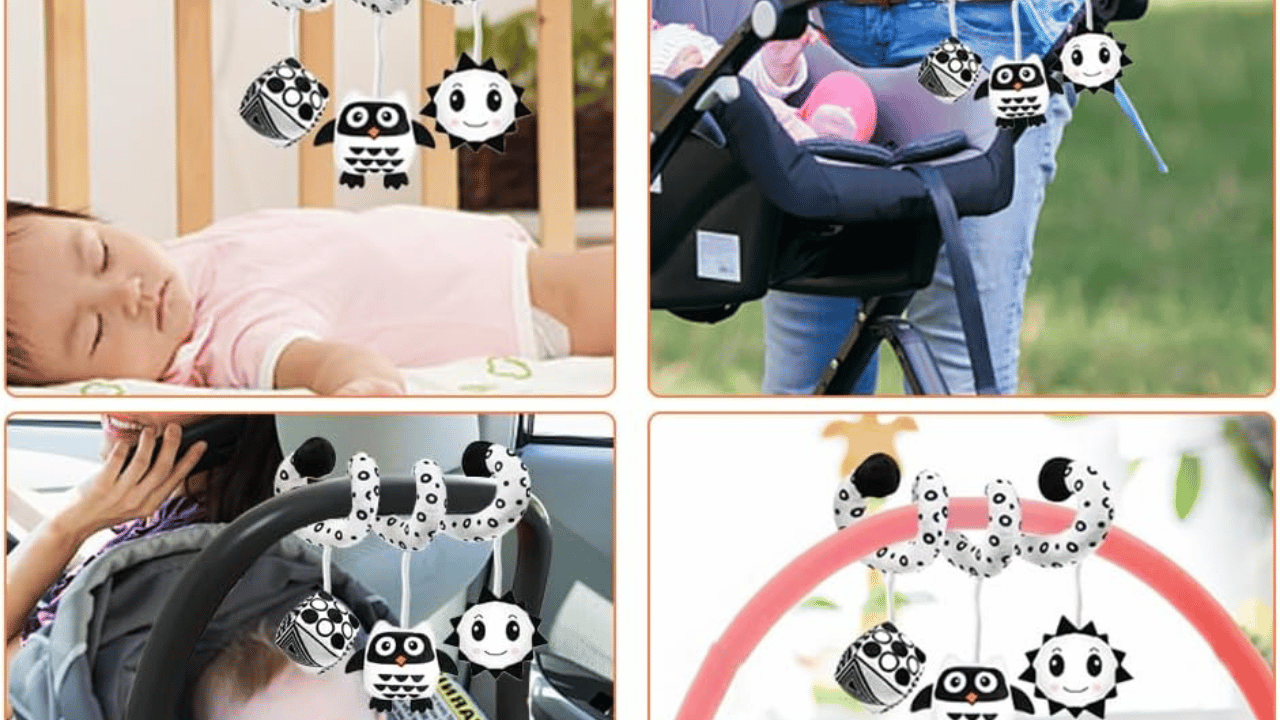
Tips for Encouraging Visual Development in Young Children
One of the best ways to encourage visual development in young children is through play. You can introduce toys with different shapes, colors and textures that will help your child differentiate between objects.
Additionally, you should make sure to provide plenty of opportunities for outdoor exploration—this will help your child develop their vision in a natural setting. You may also want to consider purchasing educational books with colorful illustrations and photographs to help your child learn about the world around them.
Finally, it's important to create a stimulating yet safe environment for your child to explore. This will give them the chance to learn and grow at their own pace without feeling overwhelmed or intimidated by their surroundings.
By introducing black-and-white images and objects in your baby's environment, as well as colorful and tactile objects for older children, you can create a rich learning atmosphere that will benefit your little one for years to come.
Common Misconceptions About Color Perception in Infants
One of the most common misconceptions about color perception in infants is that newborn babies can see all colors. While a baby's eyes are very good at picking up differences between black and white images, they aren't able to accurately distinguish between hues until around 4 months old.
It's also important to remember that not all black-and-white objects are created equal—some may be too complex for newborns to process. When choosing images and toys, make sure they are simple enough so that your baby can easily recognize the shapes and patterns.
Finally, it's important not to underestimate the power of color in a child's development. As they get older, colorful photographs and art can become incredibly stimulating for your child.
Black and White Baby Toys FAQ's
Are black and white images good for babies?
Yes! Black-and-white images are great for stimulating a baby's vision, as newborns have a higher sensitivity to contrast than adults. Introducing various shapes and designs can help your little one differentiate between objects and hone their visual skills. Additionally, black-and-white images are often easier for them to process than a multi-colored image. Make sure to introduce new shapes and patterns regularly so they can continue to develop their vision.
At what age do babies start to see color?
Typically, babies start to recognize colors at around 4 months old. However, this can vary depending on the individual child. If your little one isn't recognizing colors yet, don't be discouraged. Colors and hues can become more visible as the child's vision develops over time. To help them learn, try to bring color into their environment with high contrast toys, books and activity boards.
What are some ways to stimulate a baby's visual development?
Outside of introducing black and white images, there are many other ways to stimulate your baby's visual development. You can hang mobiles containing different shapes and colors in your baby's nursery, provide tactile stimulation with soft blankets and stuffed animals, or purchase educational books with colorful illustrations. All of these activities will help to engage your little one and keep them learning.
Final Thoughts
In conclusion, black and white toys are not just pretty playthings – they're powerhouses of developmental benefits for your baby. From boosting brain development to enhancing visual tracking skills, these toys pack a punch while keeping playtime fun and engaging. So, parents, don't miss out on the wonders of black and white toys. Embrace the monochrome magic and unlock your baby's full potential!
Remember, each play session is an opportunity to bond, stimulate, and nurture your baby's growth. So go ahead and fill your toy collection with a kaleidoscope of black and white wonders. Your little one will thank you for it – and who knows, you might just become their favorite playtime companion.



